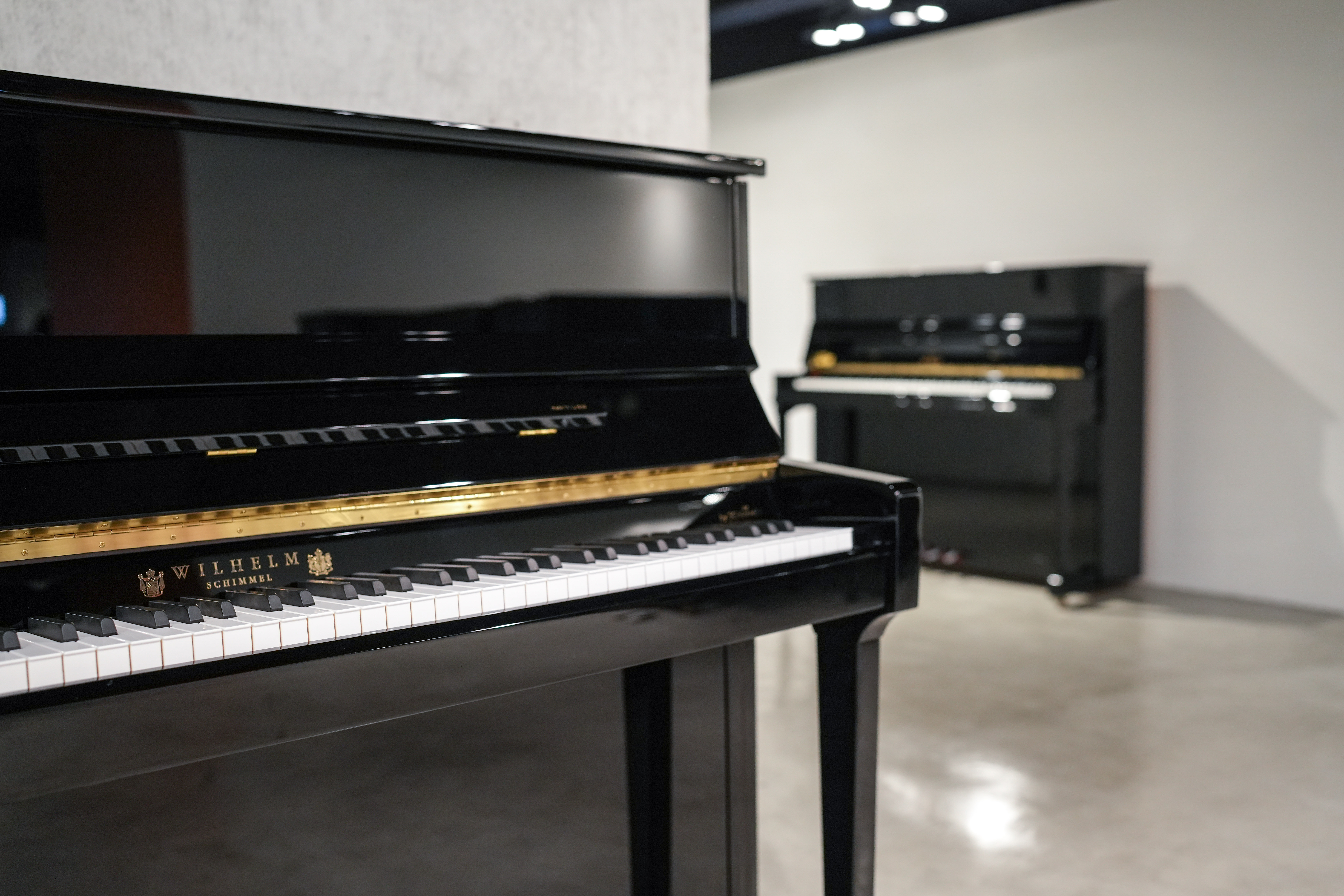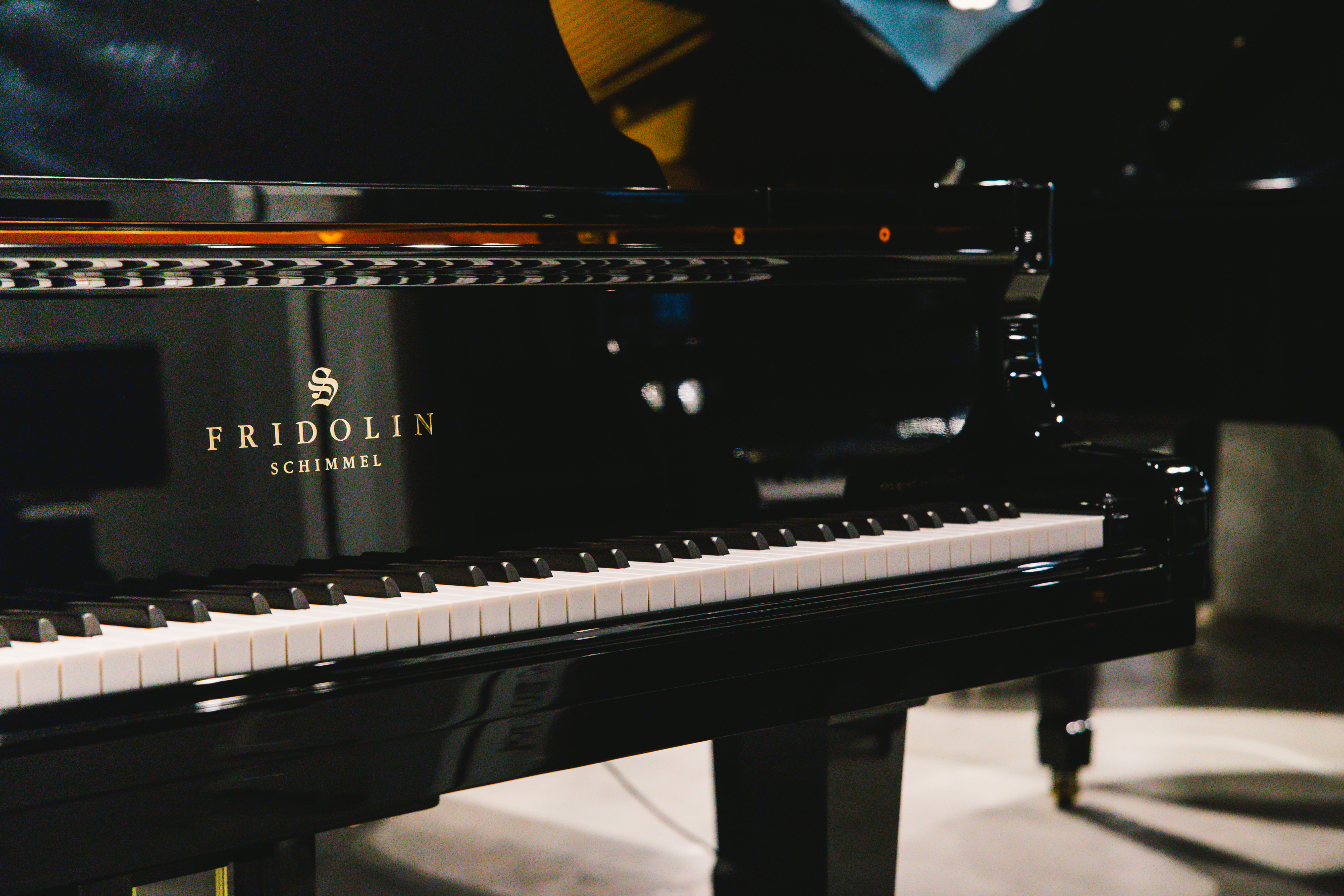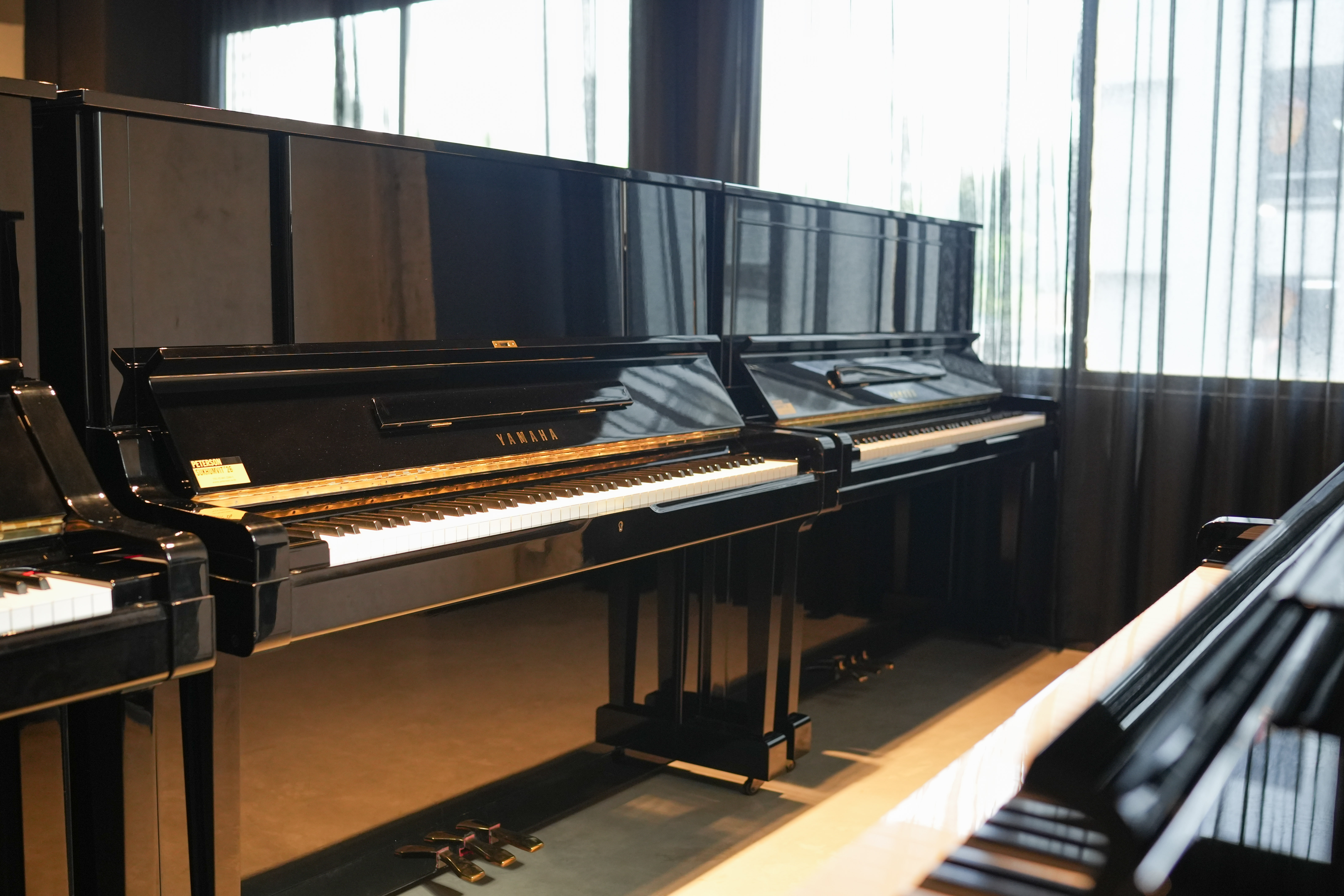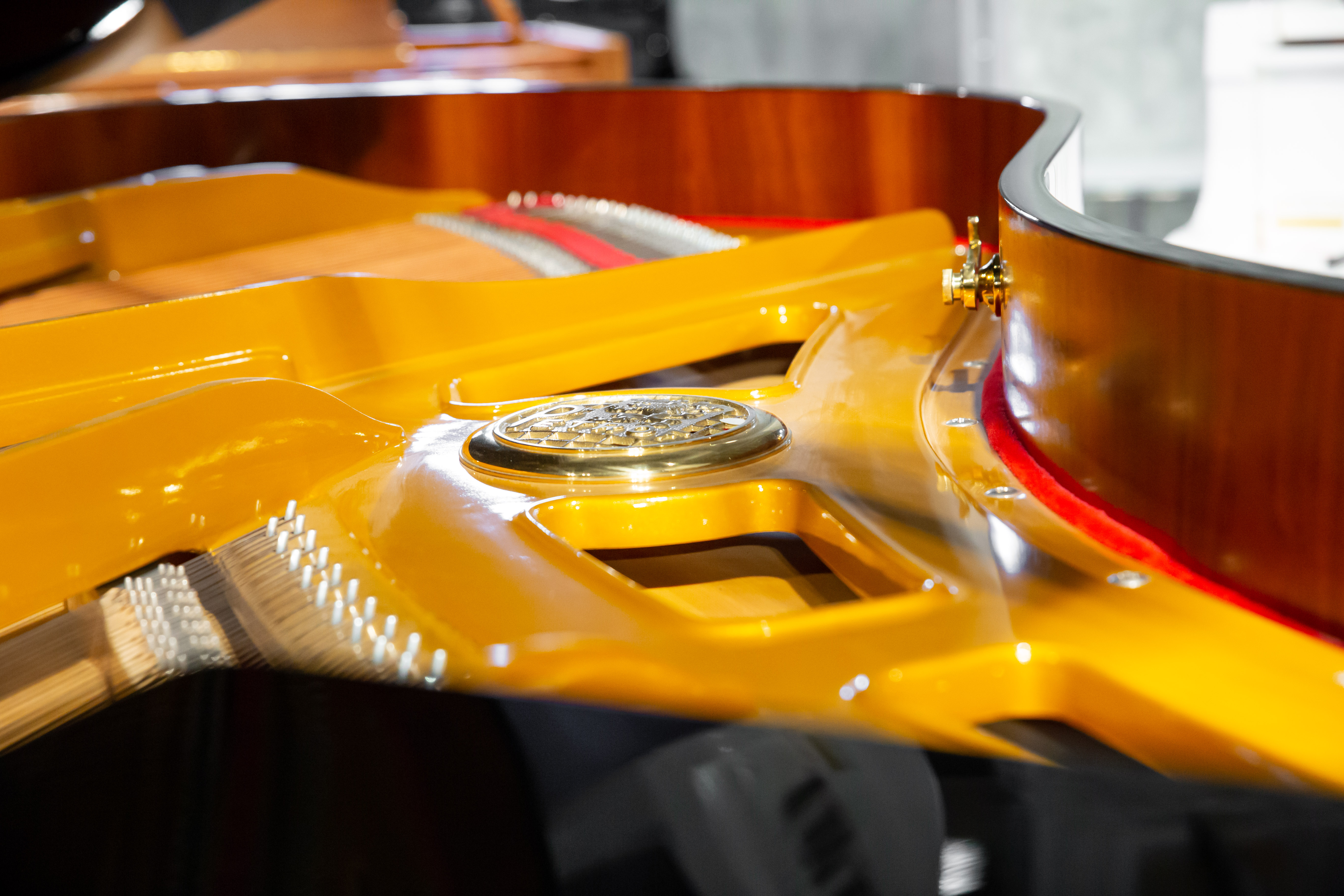Tips for Buying a Piano
By: Peterson Piano GalleryPeterson Sukhumvit #26 has supplied acoustic pianos from all the leading manufacturers for over 30 years and is widely respected in the music industry for providing unbiased information and impartial advice. This buyer’s guide offers important insights into choosing and owning a piano, helping you decide whether to buy your first piano or upgrade from your current one.
Quick Links:
1. Acoustic Piano vs Digital Piano
2. A Guide to Choosing a Piano: Sound, Tone, Touching
3. Upright Piano
4. Grand Piano
5. New or Used Piano?
6. Caring for Your Piano
7. Secondhand Piano Inspection
8. Piano Maintenance
9. Acoustic Piano Tuning
10. Where Should I Place My Piano?
11. Piano Warranty
1. Acoustic Piano vs Digital Piano
Acoustic Piano
Acoustic pianos retain their value over time, while digital pianos depreciate quickly due to frequent launches of new models with advancing technology. An acoustic piano produces a pure and resonant tone due to natural materials and physical principles. The wool-covered hammer-heads striking tensioned strings create a blend of harmonics, enhanced by a spruce soundboard.
Moreover, acoustic pianos are constructed more robustly and are highly durable. Their traditional cabinet build allows for easy and often invisible repairs to the casework, unlike digital pianos where repairs can be complex and costly, especially once out of warranty. The touch sensitivity of an acoustic piano, with its physical escapement mechanism, cannot be replicated by digital pianos despite technological advances. However, acoustic pianos also require tuning at least twice a year to maintain concert pitch, a task that can be performed quickly and inexpensively by a piano tuner.
Furthermore, acoustic pianos generally come with longer manufacturer warranties, some up to 3 years, compared to the shorter lifespan and warranties of digital pianos. Acoustic pianos operate without needing an electrical power supply, unlike digital pianos, which are dependent on electricity. Acoustic pianos have a life expectancy of over 50 years with options for renovation and restoration, ensuring longevity and continued performance.
Digital Pianos
Digital pianos replicate acoustic piano sound using digital samples and speakers, offering versatility with various instrument sounds, effects, and recording capabilities, suitable for modern music production and practice. Despite advancements in sampling technology, they cannot fully capture the nuanced expression, touch, and tone of acoustic models.
They are compact and portable, making them ideal for smaller spaces or gigging musicians, and require minimal upkeep compared to acoustic pianos. Digital pianos include features like headphone outputs for silent practice, built-in metronomes, recording functions, and connectivity options for computers and MIDI controllers, enhancing versatility for practice and performance. They are particularly suitable for players living in smaller spaces who require silent practice modes, whether in apartments or detached houses.
However, digital pianos have shorter lifespans due to rapid technological advancements, limiting upgrade options and often becoming outdated quickly. They may lack acoustic pianos' durability and tactile feel, impacting long-term playing satisfaction and technique development. In summary, while digital pianos offer convenience, versatility, and modern features, they do not replicate the authentic acoustic piano experience regarding touch sensitivity, tone quality, and long-term durability.
2. A Guide to Choosing a Piano
Sound & Tone
Various factors influence a piano’s sound and tonal quality. The instrument’s size, the quality of its components, and overall construction all contribute to its tonal output. The tonal quality and volume of a piano are directly affected by the size of its soundboard and the length of its strings. Taller upright pianos or longer grand pianos have larger soundboards and longer string lengths, resulting in more powerful and richer tones. Each acoustic piano possesses its distinct tonal character; even two identical models may sound different due to variations in natural materials, components used, and the hammer voicing by individual technicians.
High-quality materials, such as better-grade merino wool for the hammer felt, positively impact tonal quality, as do the quality of strings used. Piano tone is often described as ‘mellow,’ ‘medium,’ or ‘bright.’ However, tonal preferences can be adjusted using toning needles to reduce tension in the hammerhead for a brighter tone, or reshaping the hammerhead and applying a piano technician’s dope to enhance brightness if the tone is too mellow. It's essential to note that each piano will sound different in various environments. If you decide to adjust the voicing to suit your room after installation, it's advisable to let the piano settle for at least six months.
Touch
Piano touch, like tone, is a matter of personal preference. While touch and tone are independent, they are psychologically interconnected. Generally, a brighter-sounding piano feels lighter to play because less pressure is needed to achieve a similar volume compared to a more mellow piano. It's important to try various pianos as each instrument will have a different touch. A piano with a heavier touch provides more resistance and may be less responsive but can aid in developing techniques and finger strength. The touch of an acoustic piano can be adjusted through regulation, which modifies key depth, set-off, and check-off. More significant adjustments may involve adding or removing lead from inside the key sticks. The average down-weight of piano keys is 50-55 grams, and the up-weight is 20-25 grams. However, the weight and responsiveness of piano keyboards are highly individualised, and acoustic pianos can be tailored to suit most preferences.
3. Upright Piano
The upright piano is widely favoured for use in homes, schools, and smaller venues due to its compact vertical structure. Unlike grand pianos where hammers move horizontally, upright pianos have a vertical action requiring a spring to return the hammer to position, a process slightly slower than the natural gravitational pull on a grand piano action.
Upright pianos come in two main styles: contemporary and traditional. Contemporary designs lack a leg under the keyboard and feature a gradual, sloping front panel that curves over to meet the top lid. These models are typically compact, around 109 cm high, and do not exceed 116 cm to avoid top-heaviness, making them less suitable for frequent movement. In contrast, traditional uprights, the most popular style, include a leg under the keyboard, a straight front panel, and a square top lid. These models are typically taller, ranging from 120cm to 130cm.
The term "Professional Upright" refers to models that are 120cm or taller. These pianos feature longer string lengths and larger soundboard surface areas, resulting in a powerful, rich, resonant tone. Professional uprights are considered industry standards for piano teachers, schools, and professional musicians.
Historically, upright pianos featured two pedals—soft and sustain—until the 1970s. Most modern uprights now come equipped with three pedals, with the additional pedal often used to engage a "celeste" rail that dampens volume, commonly known as the "practice pedal." Higher-quality upright pianos may also include a full "sostenuto" pedal, similar to those found on grand pianos, allowing sustain for selected notes while others are played without sustain.

4. Grand Piano
The grand piano has been an iconic presence for almost a century before its upright counterpart, retaining its grand status in any setting today. Its horizontal action facilitates rapid hammer return, enabling faster note repetition and allowing pianists to hold notes without fully releasing the keys, enhancing control and expression.
The open case design of a grand piano projects sound further, amplifying tonal power and volume. Similar to upright pianos, longer grand pianos feature increased string length and larger soundboard surface area, resulting in deeper tones and greater resonance. The term "baby grand" is commonly used but doesn't specify a particular size; generally, it refers to grand pianos 5’6” (170cm) and smaller.
A grand piano shorter than 5’0” (152cm) doesn't significantly differ in string length and soundboard area from a 130cm tall upright piano. However, it offers similar tonal power and quality, with the added advantage of superior action. Placing a grand piano in a room smaller than 10 square metres is not recommended due to its overpowering presence and potential aesthetic imbalance.
To determine the ideal grand piano size for your space, it's advisable to request a piano template.

5. New or Used Piano?
There is no 'one size fits all' approach to this and it is strongly recommended that before purchasing a new piano.You should research the possibility of a good pre-owned version of the same model. There can be dramatic savings made when purchasing a used piano and in the case of pre-owned acoustic pianos, the tonal qualities are often better suited to a domestic environment because the soundboard has matured. It is vitally important that when purchasing a used acoustic piano you enquire as to its history and what works have been carried out on the piano.
If it has received any renovation or overhaul work, this must be done using genuine parts - this is especially important when considering refurbished Yamaha instruments (please ask a member of the Peterson team for a separate guide specifically about buying a used Yamaha piano). It is essential to purchase a used digital piano from a retailer that has trained electronic repair engineers and can warranty the instrument for a minimum of 2 years.
Purchasing a pre-owned digital piano from a private seller should be wisely avoided without a warranty.
New
No marks or scratches to the casework
Interior components in perfect condition
Acoustic pianos will adapt to your playing style over time
Will be covered by a Manufacturer's Warranty
Used
Get more for your money - extensive savings compared to new
The tone of an acoustic piano often improves with age as the soundboard matures
Higher residual value as initial depreciation has already been lost
Better tuning stability (not applicable for digital pianos)
When buying a used piano, it is important to ensure any of the required repairs or maintenance has been carried out using 100% genuine parts. Only an authorised dealership of the piano brand will be able to guarantee this. It is important as it will greatly affect both the performance and playing experience of the piano but also the resale value, as a non-genuine instrument will be seen as a far less desirable instrument.

6. Caring For Your Piano (Acoustic)
Casework
Acoustic and digital pianos are often considered as quite complex instruments but there is surprisingly little maintenance required to keep them in optimum condition. Both digital and acoustic pianos require occasional dusting to the cabinet with a soft, microfibre cloth. We recommend avoiding the use of any furniture polish, especially those containing silicon. Specialist piano polish is aral on the pis as wea lin die unfortunate event of ase work damage,it is advisable to get in touch with a Piano Casework Repair Specialist or a reputable piano retailer who will be able to provide assistance. Most cabinet chips/dents/scratches can be repaired almost invisibly.
Water Damage
Should your piano be subjected to an environment with excessive amounts of water (i.e. burst pipe etc), it is imperative you request a qualified tuner or piano retailer to attend your property and carry out a detailed assessment - you should do this even if the water hasn't made contact with the piano as it is the sudden change in moisture content and humidity that can cause problems for the piano longer term.
Insurance
It is important to ensure your piano is covered by insurance - there are different ways to do this. You can request it is added to an existing home policy as a named item or you can initiate a specific policy for the instrument - Peterson has preferential rates negotiated with the leading musical instrument insurers so can assist with this if required. It is also recommended to insure your piano using a 'new for old' policy - the insurance company may require a covering letter from an authorised piano supplier to confirm the piano's retail value, again Peterson can assist with this.
7. Secondhand Piano Inspection Checklist (Acoustic)
7.1 Serial Number Identification:
- Locate the serial number on the iron frame to determine the piano's age.
7.2 Checking the Loop Cord:
- What repairs have been done to this secondhand piano?
- Which mechanics performed the repairs?
- Has there been replacement of copper wires, hammer felts, or damper parts?
7.3 Exterior Colour Condition and Polishing of Brass:
- Evaluate the condition of the piano's exterior colour and the polishing of brass parts.
7.4 Piano Action:
- Assess if there is any excessive play or slow key response in the piano action, indicating potential issues with the keys.
7.5 Piano Keys:
- Check the condition of the white top keys; replace if scratched or beginning to yellow.
7.6 Hammer Condition:
- Has the hammer head of this piano been polished (reshaped)?
- Has the hammer been readjusted (re-voiced)?
7.7 Pedal:
- Have all the pedals been replaced?
8. Piano Maintenance
Tuning
Detailed information of tuning can be found in the next heading (Acoustic Piano Tuning). Acoustic pianos typically require tuning approximately twice a year, though this frequency can be affected by the climatic conditions in which they are situated. A piano has approximately 230 strings under extreme tension, totalling nearly 20 tons of pressure.
Regulation
Piano regulation is essential for maintenance, involving adjustments to the mechanical aspects of the action and other internal parts to optimise performance and compensate for wear effects. This process addresses the compacting and settling of cloth, felt, and buckskin, as well as dimensional changes in wood and wool parts due to humidity levels. It's usually an inexpensive process that many tuners include as standard during routine tuning.
Voicing
Voicing, also known as toning, refers to fine adjustments made to the hammerheads. Over time, felt may become compressed as strings create grooves. Voicing can be tailored to individual preference by reducing pressure in the hammerhead using voicing needles (if the tone is too bright) or by reshaping the hammerhead slightly and applying voicing lacquer to the shoulders (to make it brighter or mellower). This process is typically recommended every five years or so, depending on the intensity of use. It's a relatively straightforward procedure that most competent tuners can execute effectively.
9. Acoustic Piano Tuning
There is no denying that a properly tuned piano offers the best playing experience and enjoyment. It is generally recommended to tune a piano twice a year, though this may vary depending on how frequently it is used (for instance, a piano teacher might require tuning every quarter).
The frequency of tuning also depends on the climatic conditions where the piano is located. Acoustic pianos, due to their significant use of wood and other natural materials, are sensitive to fluctuations in moisture content, humidity, and temperature. Therefore, it is advisable to maintain stable climatic conditions: humidity ideally between 40-60% and temperature between 17-32°C.
All pianos should be tuned as part of the final assessment before delivery. Once installed in your home, an acoustic piano will gradually go out of tune due to the aforementioned changes in climatic conditions, whether it's a new or used instrument. The optimal settling period is 6-8 weeks, during which your first free after-service should ideally take place (reputable piano retailers typically offer this).
A qualified piano tuner will visit your home to tune the piano in situ, a process that usually takes about one hour. Tuning involves adjusting the tension of each string using a tuning lever to achieve the correct frequency of vibration, ensuring harmony among the strings. Strings, under extreme tension, tend to gradually relax when struck by the hammers; however, tuning stability improves over time as the strings and tuning pins settle into their positions.

10. Where Should I Place My Piano?
The location of a piano should be considered carefully and places subject to severe temperature fluctuations should be avoided. Other things to avoid are direct sunlight (particularly morning sun), cold draughts, proximity to a radiator or a wood-burning stove and placing the instrument in a conservatory.
In places with high moisture content and a naturally colder environment, such as a church, a heater bar controlled by a thermostat can be installed. This heater releases only a low amount of heat and is inexpensive to fit.
11. Warranty
When purchasing a piano, whether new or used, acoustic or digital, it is crucial to ensure it comes with a substantial warranty. Most new instruments are covered by a manufacturer's warranty, which protects the buyer against faulty goods but typically does not cover issues caused by climatic variations. Problems like sticking keys and squeaky pedals are examples of settling-in issues that are usually not covered by the manufacturer's warranty. However, reputable sellers should provide their guarantee to address such issues.
For used pianos, it is important to ensure there is a minimum of a 12-month warranty. Exercise caution when buying pianos from auctions or online sites like eBay. If purchasing from a non-approved supplier, seek specialist advice and ensure the piano undergoes a thorough inspection before finalising the purchase.
---
Get in touch today to discover more
Our Showroom (Parking Available)
Email : vimonwan@peterson.sale
Tel : 026612160